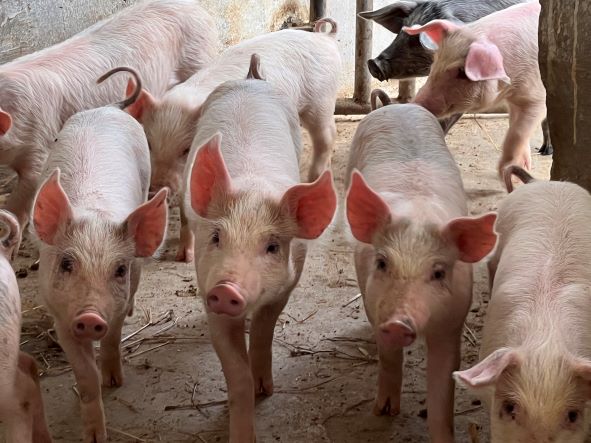Comparative performance of weaner pigs fed commercial feed and Azolla Pinnata as feed substitute
Keywords:
Average daily gain; Azolla pinnata; commercial feed; cost-benefit-analysis; feed conversion ratio; weaning and final weightAbstract
This study compared the growth performance and cost-benefit analysis (CBA) of weaner piglets fed 100% commercial feed versus 30% Azolla pinnata substitution. A total of 54 weaners were randomly assigned to two groups; A and B, in five batches. The average age of the weaners for both the groups were 35 days at the onset of feeding trial. The animals remained under the trial for 25 days, until they attained the age of 60 days. Weaners in group A were fed with 100%n commercial feed while those in group B had 30% of their daily feed replaced by Azolla pinnata. Budhi Maya Gurung (BMG) commercial feed was used for the study. Weaners were fed at 5% of their body weight. The weaning weight was considered as an initial weight for all animals.Thereafter each weaner was weighed at an interval of five days using 20-kg capacity SRK Analog weighing scale. The piglets were weighed before feeding in the morning, and each weaner was weighed five times during the entire trial period. The final mean weights were 10.09 ± 1.79 kg for group A and 9.16 ± 1.40 kg for group B, and the mean difference was significant (p = 0.004). The average daily gain (ADG) was 0.11 ± 0.43 kg and 0.08 ± 0.03 kg, at (p=.000) and feed conversion ratio (FCR) was 1.0 and 1.82, respectively, for group A and group B, during the 25 days trial period. We conclude, feeding 100 % commercial feed is superior to substituting 30% with Azolla pinnata in our study. Moreover, the cost benefit analysis showed higher net return from piglets fed completely on commercial feeds than 30% Azolla pinnata substitution. The less net return from animals fed partly with Azolla pinnata was due to higher initial investment incurred for Azolla pinnata cultivation. Therefore, in the long run, the feeding of Azolla pinnata may be considered as protein supplement but not to replace commercial feed completely as this could lead to insufficient energy provision in the feed. The recurrent cost of maintaining the Azolla pinnata unit would be much lesser in the succeeding years.

Downloads
Published
License
Copyright (c) 2022 Bhutan Journal of Animal Science

This work is licensed under a Creative Commons Attribution 4.0 International License.





